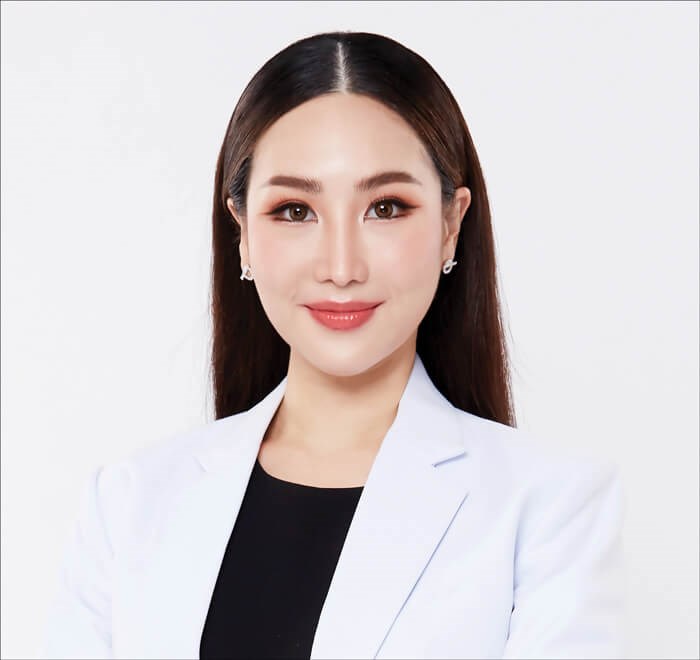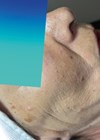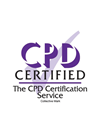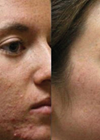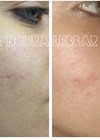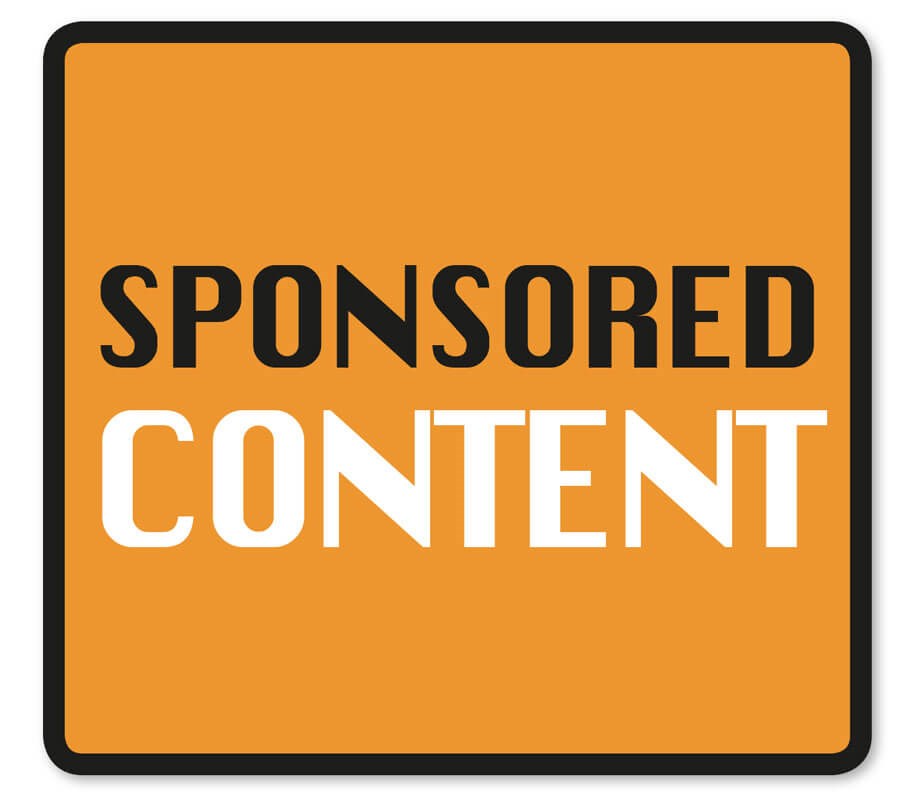
BY DR. PATCHANON ASAWAWORARIT
The aging neck undergoes several complex changes as a part of the aging process. These multifaceted changes include physiological adjustments at skin, fat, muscle, and bone levels. Aging causes thinning of the skin, a decrease in the production of collagen and elastin, which results in loss of elasticity and the development of wrinkles. Additionally, the effects of gravity lead to sagging skin and underlying tissues, which contribute to an older appearance.
When a patient is evaluated for neck rejuvenation, clinicians consider several factors. They assess the degree of preplatysmal and subplatysmal fat and the presence of platysmal bands. In addition, they look at the degree of jowling, which is the sagging skin at the lower jaw extending into the neck.
Non-surgical neck tightening treatments are ideal for individuals who cannot or do not want to undergo surgery, are looking to delay or avoid it, or prefer lower-risk, less costly options. These treatments also appeal to those with busy schedules due to their minimal downtime.

Figure 1. Male 57-year-old patient before (left) and after (right) frontal and side view neck rejuvenation with liquid PCL.
After four weeks, wrinkles are reduced, skin laxity and quality improvement are observed.
Non-surgical neck rejuvenation involves a variety of treatments that aim to enhance the appearance of the neck without invasive procedures. This includes botulinum toxin for a smoother neck appearance; dermal fillers to restore volume and minimise wrinkles; deoxycholic acid, an injectable that reduces submental fat; laser treatments and radiofrequency devices for skin tightening and collagen stimulation; focus ultrasound, a non-invasive ultrasound treatment; and chemical peels to improve skin texture and reduce wrinkles. These treatments can be combined for the most comprehensive results.
Polycaprolactone (PCL) is a type of synthetic polymer that has been widely used in various medical applications due to its properties as a biodegradable and biocompatible material. In the context of aesthetic medicine, PCL has been used as the base for certain types of dermal fillers for a while. PCL stimulates fibroblasts, cells integral to collagen formation. The resulting process, called neocollagenesis, enhances skin firmness and elasticity over time. As the body gradually absorbs the bioresorbable PCL, the stimulated collagen production continues, offering sustained and lasting improvements to the skin. The increase in collagen makes the skin appear plumper, reducing fine lines and wrinkles for a more youthful appearance. Besides these improvements, boosted collagen production also results in better skin texture, providing a smoother, more supple feel. Furthermore, it can define the jawline by improving skin elasticity and reducing sagging, leading to a youthful, contoured appearance.
Serious adverse events related to PCL-based fillers are rare but can include infection, the formation of nodules or granulomas, and vascular complications. Infection may require medical intervention, while nodules or granulomas may cause discomfort and require additional treatment. Although extremely rare, vascular complications can lead to tissue damage or blindness. It’s essential to consult a qualified healthcare professional to minimise these risks.
GOURI, a groundbreaking innovation from South Korean firm DEXLEVO, is the pioneer in liquid polymer fillers composed of polycaprolactone (PCL). The fluid state of PCL makes it ideal for injectable applications. As a PCL-based solution, GOURI stimulates collagen production, effectively reversing signs of facial aging. What sets GOURI apart is its unique composition and spreadability. The liquid PCL promotes an even distribution across the face. GOURI is designed using DEXLEVO’s cutting-edge CESABP technology, which fosters natural skin collagen regeneration without the need for microparticles.
GOURI differentiates itself from dermal fillers, like those based on hyaluronic acid (HA) or PCL, by providing a more generalised lifting effect. Instead of being localised in specific injection sites, GOURI diffuses through the skin, delivering an all-around facial rejuvenation.
The advantages of GOURI are manifold, featuring fewer injection points and encouraging the formation of a three-dimensional matrix that promotes fibroblast formation. This action triggers a surge in new collagen production, enhancing skin elasticity. The GOURI treatment process is minimally invasive and relatively simple, involving the injection into the sub-dermal plane on each side of the face.
The GOURI injection technique can be divided into two types. The first type involves the use of a sharp needle, while the second uses a blunt-tipped cannula. For injections with sharp needles, one can specifically target problem areas and focus on parts that need correction. However, the precision in terms of skin layer depth may be lacking. On the other hand, injections with a blunt-tipped cannula offer precision in terms of the desired skin layer where the product needs to take effect. This, however, relies heavily on the experience and expertise of the treating physician in using a blunt-tipped cannula.
From experience, for accurate results, it is recommended to use the blunt-tipped cannula for treatment mainly. This is because, in addition to achieving precision in terms of skin layer for treatment, the recovery period after treatment – such as the occurrence of bruising, swelling post-treatment, and the overall comfort of the patient after treatment – is superior to using a sharp needle for injection.
Using the injection technique for liquid PCL, the physician injects this active substance into the subdermal skin layer. When injecting with a blunt-tipped cannula, the product is applied using a linear retrograde technique, which allows the drug to distribute and cover the skin area effectively.
Typically, for neck rejuvenation, two syringes of liquid PCL are used for treatment. The treatment is done once, and the results can be seen after about four weeks. It’s also possible to maintain or sustain the treatment results by undergoing the procedure every three to six months.
Within the initial two weeks post-treatment, subtle changes start to emerge, while more prominent and noticeable results typically become evident after approximately one month. The treatment effectively enhances skin firmness and elasticity, effectively reducing sagging and diminishing wrinkles. By stimulating collagen production, it minimises fine lines and wrinkles, resulting in a more youthful and rejuvenated neck appearance. An outstanding advantage of this treatment is its ability to deliver natural-looking outcomes. The neck appears refreshed and revitalised, maintaining its authentic appearance rather than appearing altered or artificial, enhancing the appeal of this aesthetic approach.
Safety is a notable feature of liquid PCL treatments. This method has gained popularity due to its minimal risk of severe side effects. Unlike other collagen stimulators, liquid PCL has not been associated with conditions such as vascular occlusion so far. Furthermore, the absence of reported granuloma formation is another advantage. Granulomas are inflammatory responses that can occur with specific treatments, potentially leading to discomfort or other health complications.

Figure 2. Female 55-year-old patient before (left) and after (right) frontal and side view neck rejuvenation with liquid PCL.
After four weeks, wrinkles are reduced, skin laxity and quality improvement are observed.
Liquid PCL injections present a promising advancement in neck rejuvenation. With their straightforward administration, natural-looking results, and favourable safety profile, they have become increasingly popular among those seeking effective aesthetic solutions. However, it is crucial to ensure that trained and certified professionals perform these procedures to ensure safety and maximise efficacy.
In conclusion, treatments with collagen stimulators have gained significant popularity among medical professionals and patients. This is primarily due to the numerous benefits and positive results associated with the use of collagen stimulators.
One of the key advantages of collagen stimulators is the ability to achieve natural-looking results. Unlike other cosmetic treatments, collagen stimulators stimulate the body’s natural collagen production, leading to gradual and subtle improvements in the skin’s texture and appearance. This gradual enhancement helps create a more natural outcome, avoiding the drastic changes that can sometimes occur with other procedures.
Another crucial factor contributing to the popularity of collagen stimulators is their high safety profile. Patients can feel confident in undergoing collagen stimulator treatments as they have been extensively studied and have shown minimal adverse effects. These treatments have been used for many years and have a well-established safety record, providing reassurance to both patients and medical professionals.
Furthermore, the real anti-aging results achieved with collagen stimulators are a significant driving force behind their widespread use. Patients who opt for collagen stimulator treatments often experience visible improvements in their skin’s firmness, elasticity, and overall youthfulness. These long-lasting results provide patients with a more sustainable solution than temporary treatments. As advancements in cosmetic technology continue to evolve, collagen stimulators will likely remain a sought-after option for individuals seeking effective and reliable skin rejuvenation treatments.
References
1. Alam, M., Voravutinon, N., Warycha, M., Whiting, D., Nodzenski, M., Pongprutthipan, M., West, D. P., Veledar, E., Maly, J., Poon, E., Farkas, C., Fagien, S., and Dover, J. S. (2011). Comparative Effectiveness of Nonpurified Polycaprolactone and Stabilized Hyaluronic Acid for Aesthetic Hand Rejuvenation. Dermatologic Surgery, 37(9), 1302‑1307.
2. Moers-Carpi, M., Tufet, J. O. (2007). Polycaprolactone versus hyaluronic acid fillers for facial rejuvenation: a prospective, randomized, split-face study. Journal of Cosmetic Dermatology, 6(4), 258-262.
3. Chia, C. Y., & Wong, M. T. (2011). Anatomy of the aging face: volume loss and changes in 3-dimensional topography. Aesthetic surgery journal, 31(1), 3-9.
4. Sadick, N. S., & Bosniak, S. L. (2010). Nonablative and minimally invasive rejuvenation of the neck. Dermatologic surgery, 36(4), 577‑585.
5. Guk Jin Jeong MD., Ga Ram Ahn., Su Jung Park (2019) A randomized, patient/evaluator‐blinded, split‐face study to compare the efficacy and safety of polycaprolactone and polynucleotide fillers in the correction of crow’s feet: The latest biostimulatory dermal filler for crow’s feet. Journal of cosmetic dermatology